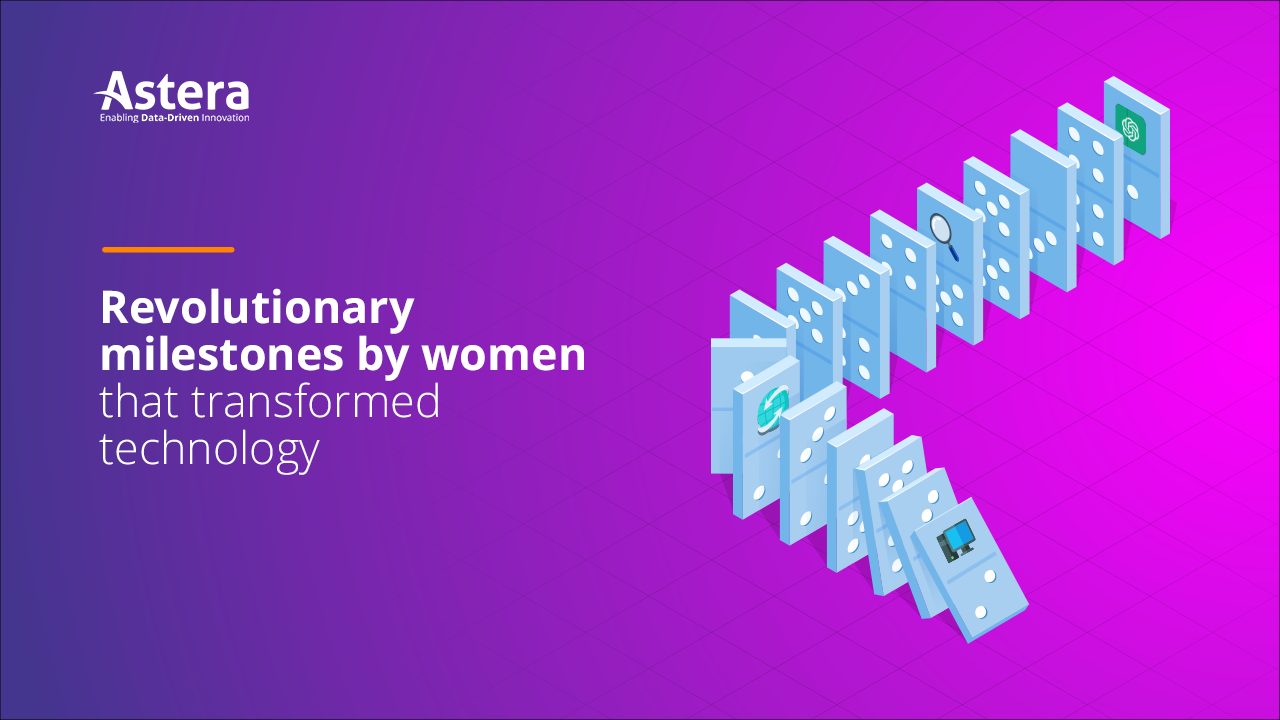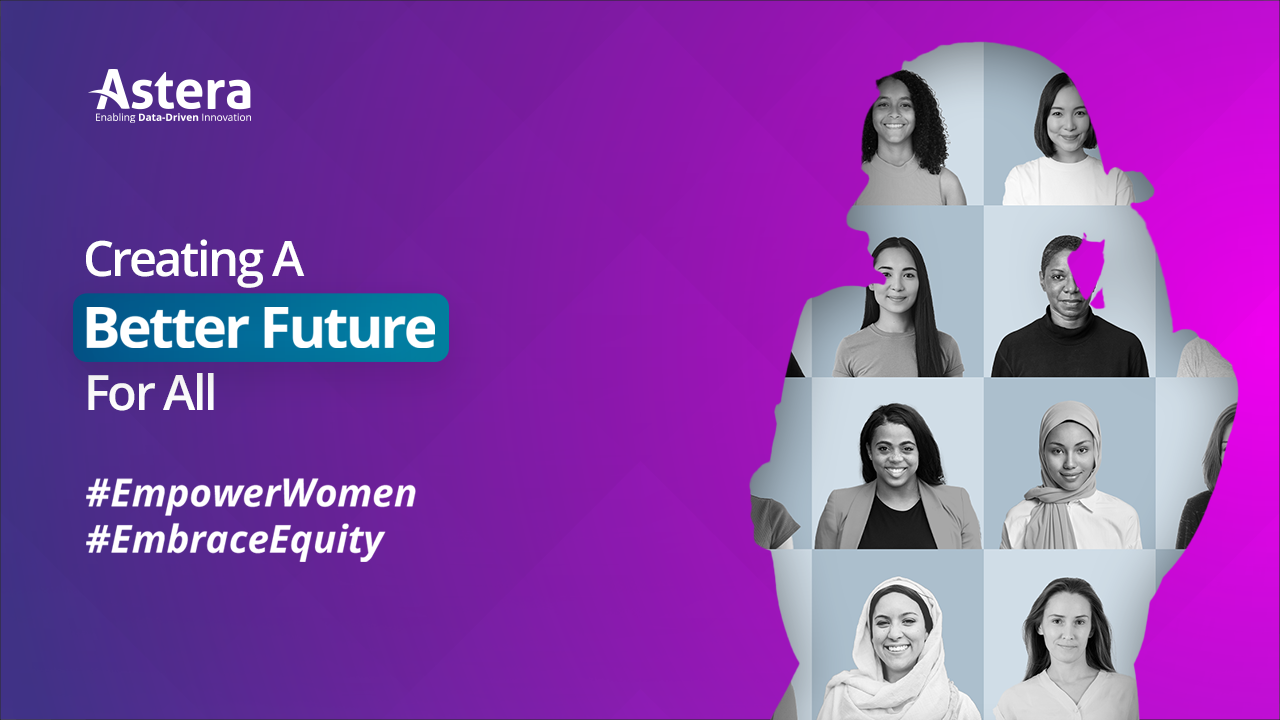
The Ripple Effect of Women in Tech

The ripple effect is like throwing a pebble into a pond. It starts small, with just a tiny ripple, but that ripple quickly spreads outward, touching everything in its path. The ripple effect is powerful because it shows how one small action can have a significant impact on everything around it.
Ada Lovelace threw a pebble into a pond in the early 19th century, creating a ripple that revolutionized the world. As we celebrate women’s achievements in STEM fields, let’s delve into how women in tech laid the foundation of modern computing that allowed brilliant minds to shine and pave the way for modern technological advancements.

The Ripple Effect of Women in Tech
Ada Lovelace
Ada Lovelace was a pioneering mathematician and writer widely regarded as the world’s first computer programmer. She worked alongside Charles Babbage on his proposed Analytical Engine, a mechanical computer considered the precursor to modern computers.
Lovelace’s most significant contribution was her developing an algorithm that could be used to calculate Bernoulli numbers using the machine. Her visionary insights and understanding of the relationship between machines and human thought laid the foundation for modern computing.
Adele Goldberg
The ripple created by Ada Lovelace continued, forging the path for Adele Goldberg to work her magic in the GUI. The computer scientist and programmer is known for her work on developing the graphical user interface (GUI)in the 1970s.
She was a part of Xerox PARC, which developed the Smalltalk programming language, including GUI for windows, icons, and menus. This system became the basis for the GUIs used in modern operating systems such as Windows and macOS.
Goldberg’s work on GUIs revolutionized how people interact with computers, making them more user-friendly and accessible to non-experts. Her contributions had a significant impact on modern technology and how we use computers today.
Radia Perlman
The ripple effect extended with the contribution of Adele Goldberg in developing GUI, charting the way for Radia Perlman to command her digital prowess. The computer scientist is known for her significant contributions to the development of the internet.
In the 1980s, she invented the spanning tree protocol (STP) used to prevent loops in computer networks. Later, she developed the Transparent Interconnection of Lots of Links (TRILL) protocol, improving STP, which enabled the growth and stability of modern computer networks.
The digital landscape as we know it wouldn’t be the same without her game-changing contributions in the development of these protocols. Her impact is nothing short of legendary.
Elizabeth Feinler
The impact of Radia Perlman’s ripple effect set the stage for Elizabeth Feinler’s ascent. The American information scientist is known for her pioneering work in developing the first search engine for the internet. She created a system to catalog and index all the resources on the early internet.
This ‘NIC Name/Server System’ was the first-ever searchable directory of online resources and paved the way for the search engines we use today.
Feinler’s work in developing this system was instrumental in making the internet more accessible and easier to navigate. . Her contribution was monumental in making the internet accessible and easier to navigate, shaping the way we find and consume information today.
Mira Murati
Feinler’s contributions in building search engines forged the path for Mira Murati to lead the way toward an AI-powered chatbot. She’s a computer scientist and entrepreneur currently serving as the Chief Technology Officer (CTO) of ChatGPT, a conversational AI platform.
In her role as CTO, Murati is responsible for overseeing the development and implementation of ChatGPT’s advanced natural language processing algorithms, which enable the platform to understand and respond to complex human language in real time.
ChatGPT’s innovative approach to conversational AI has significantly impacted the field of language processing. It will transform the way we search and navigate the digital world in the coming years.

Conclusion
The ripple effect of women in tech reverberated across time, triggering a series of events that led to today’s connected, digitized world. From Ada Lovelace’s early work on computing to Mira Murati’s AI-powered chatbot, each woman built upon the work of those who came before them, creating a wave of progress and innovation that continues to impact our lives today.
As we raise a glass to the incredible accomplishments of these trailblazing women, we must acknowledge the critical need to empower and encourage the next generation of women in tech. Embracing equality and inclusion will help us unlock a world of innovation and progress that knows no bounds. By empowering women, we can shape the future of the world—for the better, for the best!

Empowering our Team with an Equitable Work Environment
At Astera, we believe in creating a culture that values diversity and inclusivity. Fostering an inclusive culture is not only the right thing to do but also a smart thing to do. An inclusive workplace attracts top talent, promotes innovation, and increases productivity.
We prioritize hiring practices that promote diversity and inclusivity and regularly assess our progress in promoting gender equality. As is well known, women often face unique challenges in the workplace, and we’re committed to empowering women to succeed within our company.
We take proactive measures to address any gaps or challenges we identify, including providing development programs and mentorship opportunities that help women build the skills necessary to advance their careers.
We have an equitable and welcoming workplace, with women in leadership roles across various departments. This commitment to gender equality has always led to positive outcomes for our company. #EmbraceEquity

